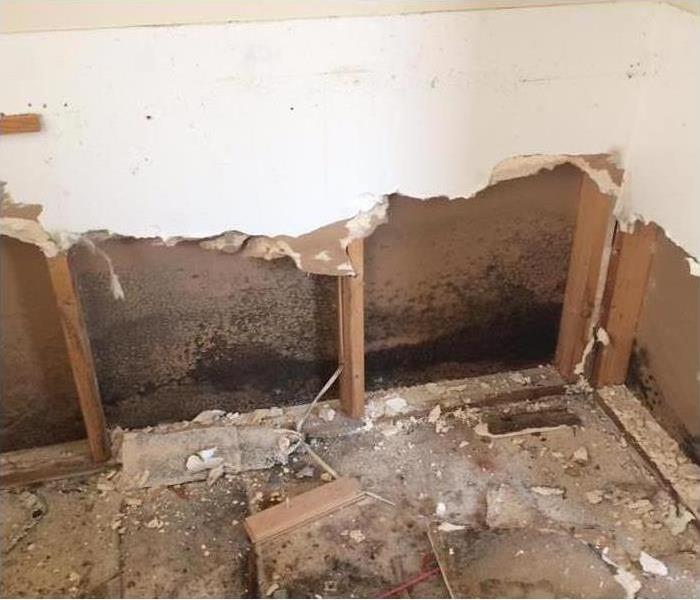Why You May See Mold After Flooding
8/27/2022 (Permalink)
Mold Growth After Storm Flooding
After a storm leads to flood water in your Griffin, FL, home, there’s a chance you may see mold growth as well. There are a few reasons for this. Here’s what you may want to know.
1. Mold Is a Fungus
One of the first things to understand is that mold is a fungus. This means that it grows by consuming organic material and water and then creating spores. This prime location for this fungi growth is in the area of high moisture and dim light.
2. Flood Water Can Create a Mold Habitat
The availability of standing water after a storm flood has occurred can create a prime habitat for mold growth. This is because flood water can get into small dim areas, such as under the baseboards, where the flood water creates plenty of moisture and the drywall and wood material provide an energy source. Fortunately, a restoration professional should know that such areas are at risk for this problem and include them in their damage assessment.
3. Flooding Can Get into Unseen Areas
It’s important to understand that water can seep into little used spaces of your home as well. This is why it’s a good idea to call a storm damage restoration professional to help any time this type of problem occurs. These professionals can handle water removal as well as any secondary damages that may occur such as mold, or sanitizing to prevent bacteria growth. They will also know what unseen areas in your home should be checked for these damages based on where the flooding occurred. This may include basement or crawlspace areas, under flooring, and between some walls.
Because mold is a fungus there’s a chance you could see mold growth after issues with standing water, like storm flooding, occur. This water can seep into unseen spaces and create a desirable habitat for the spores to grow. Fortunately, a professional can help.





 24/7 Emergency Service
24/7 Emergency Service
